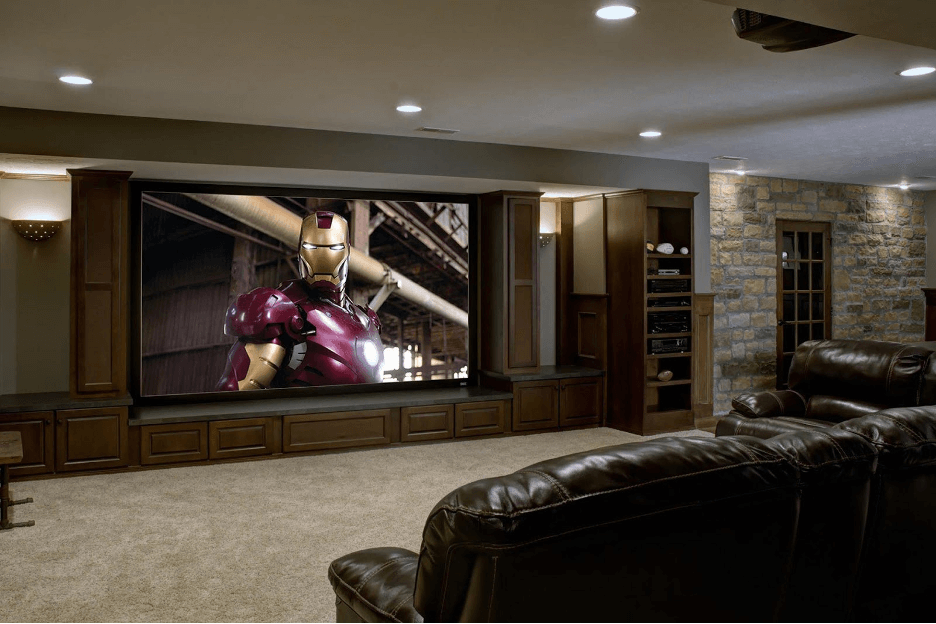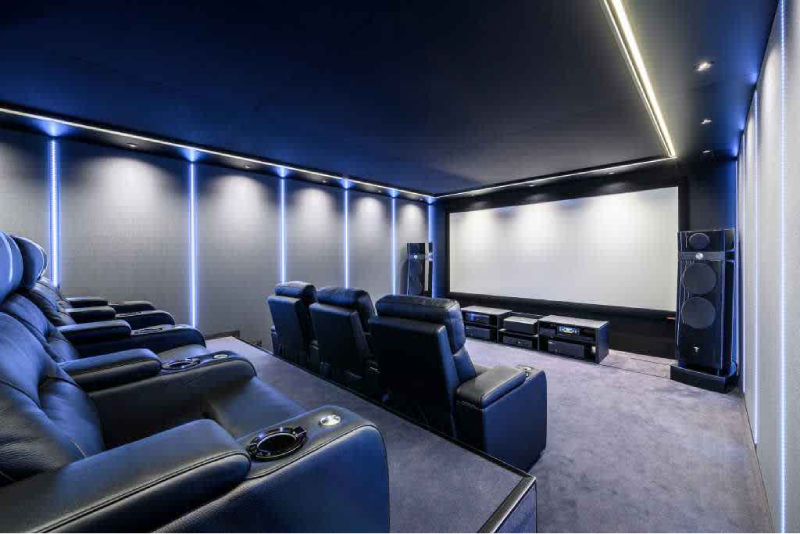Top Home Theater Tampa Installers Offering Tailored Solutions
Home Theater 101: Everything You Need to Know for a Cinematic Experience in your home
Creating a home cinema that measures up to the cinematic experience of an industrial theatre includes cautious factor to consider of numerous parts, consisting of display selection, audio systems, and room layout. Whether you are pondering the ideal screen dimension or the details of border noise, understanding these fundamentals is necessary.
Choosing the Right Screen
When setting up a home cinema, selecting the appropriate display can make or break the seeing experience - tampa home theater. The display acts as the centerpiece of your arrangement, affecting image quality, viewing angles, and total aesthetic. Secret elements to think about include display kind, resolution, and size
First, determine the proper display dimension based on your space dimensions and seating range. Next off, select between various display kinds, such as fixed-frame, motorized, or retractable displays, each offering distinctive benefits.
Resolution is one more vital variable. For a truly immersive experience, take into consideration a screen created for 4K and even 8K web content, making sure intensity and clarity. Furthermore, take into consideration the screen's gain, which impacts illumination and comparison; a higher gain can boost illumination in well-lit rooms, while a reduced gain may be much more ideal for darker atmospheres.
Picking Audio Equipment
Audio equipment is an essential part of any kind of home theater system, considerably boosting the total watching experience. The option of audio gear can establish the deepness, quality, and immersion of audio, crucial for producing a cinematic environment.
When selecting audio equipment, consider a surround sound system, which usually consists of a receiver, multiple audio speakers, and a speaker. A 5.1 or 7.1 network system is suggested, where the initial number stands for the audio speakers and the second the speaker, giving an immersive soundscape. The receiver is the heart of the system, handling sound and video clip signals, and must support modern-day styles like Dolby Atmos for an enhanced spatial experience.
Quality audio speakers are vital; try to find models that supply a well balanced sound account with great bass reaction. Floor-standing speakers can produce richer audio, while shelf options conserve space. In addition, consider wireless alternatives for simplicity of installment, although wired systems commonly deliver exceptional performance.

Optimal Seating Plans
Developing an excellent home cinema experience pivots substantially on ideal seating plans. The plan of seats plays a crucial role in both comfort and seeing quality, straight influencing the total motion picture experience.
First, think about the screen dimension and watching range. A common standard is to place seats at a range about 1.5 to 2.5 times the diagonal size of the display. This makes sure an immersive experience without straining the eyes.
Following, altitude is critical. The back rows must be higher than the front to prevent obstructions if your seats is in a tiered layout. For flat seating, ensure that the front row is not also near the display, which everyone has a clear line of vision.
Furthermore, think about the setup in regards to social dynamics. Team seating can improve the public experience, while private seats might be favored for personal watching.

Last but not least, focus on comfort with ergonomic seats that supports prolonged viewing periods. Including recliners or supported seats can substantially boost the experience, making the home theater a favored location for both home entertainment and relaxation.
Lighting and Ambiance
Efficient lights and atmosphere are vital parts of a well-designed home theater, as they considerably influence the seeing experience. The ideal lights can improve the motion picture feel, while bad selections can detract from it. For optimum outcomes, think about a layered lights approach that includes ambient, task, and accent lighting.
Ambient illumination provides general lighting, making sure that the space is not totally dark, which can strain the eyes. Dimmer switches are very suggested, enabling for modifications based on the content being seen. Job lights, such as wall surface sconces or flooring lights, offers functional lighting for activities like reading or navigating the space without interrupting the overall environment.
Accent lighting can be made use of to highlight building functions or create focal points, adding depth and passion to the space. LED strip lights behind screens or along racks can supply a subtle radiance that improves the visual experience without frustrating the visitor.

Wiring and Installation Tips
A well-planned wiring configuration is vital for accomplishing ideal performance in your house theater system. Appropriate electrical wiring not just ensures top quality audio and video signals but likewise enhances the general visual of your room. Begin by drawing up your design, determining where each component will certainly be placed, including your screen, speakers, and receiver.
When selecting cables, focus on high-grade, properly determined circuitry to decrease signal loss. HDMI cables must be used for video links, while speaker cord ought to match the specs of your speakers and amplifier. Decide for in-wall rated wires to abide by security criteria and preserve a clean look.

Final Thought
In recap, producing a phenomenal home movie theater experience requires cautious consideration of different components, including display option, audio equipment, seating plans, illumination, and electrical wiring. Each element plays a crucial function in achieving ideal efficiency and ambiance, inevitably boosting the satisfaction of home entertainment. By focusing on these variables, a cinematic atmosphere can be effectively duplicated, enabling immersive viewing experiences that rival typical theater settings. Interest to detail in each location is have a peek at this site important for general satisfaction.
Producing a home movie theater that equals the motion picture experience of a business theater includes cautious factor to consider of multiple parts, consisting of display choice, sound systems, and area design.When setting up a home theater, selecting the best screen can make or break the checking out experience. Next off, pick in between numerous screen types, such as fixed-frame, mechanized, or retractable displays, each offering distinctive advantages. For a really immersive experience, think about a screen designed for 4K or also 8K material, guaranteeing sharpness and quality.In recap, producing an outstanding home movie theater experience requires careful factor to consider of different elements, consisting of display choice, audio equipment, seating setups, lighting, and circuitry.